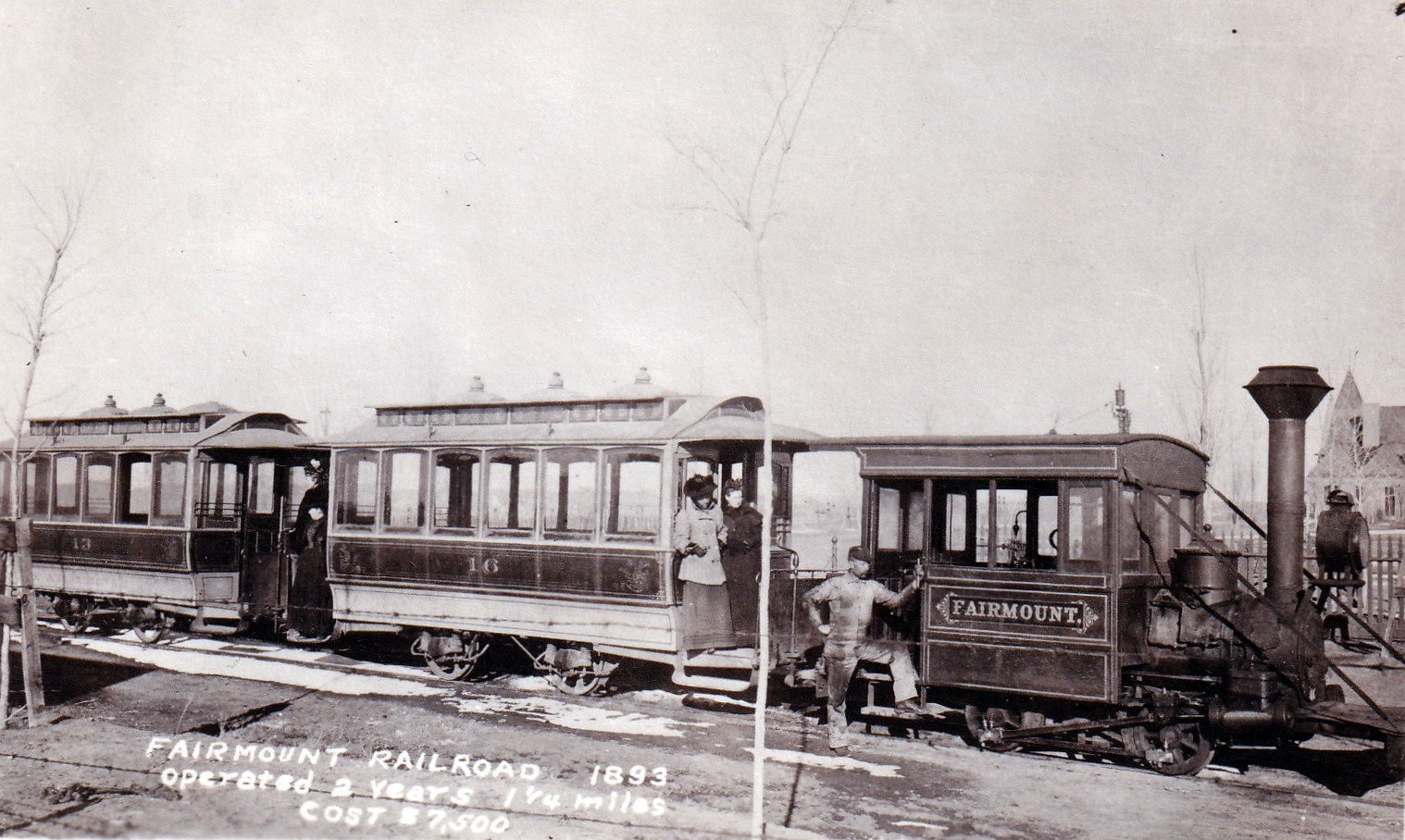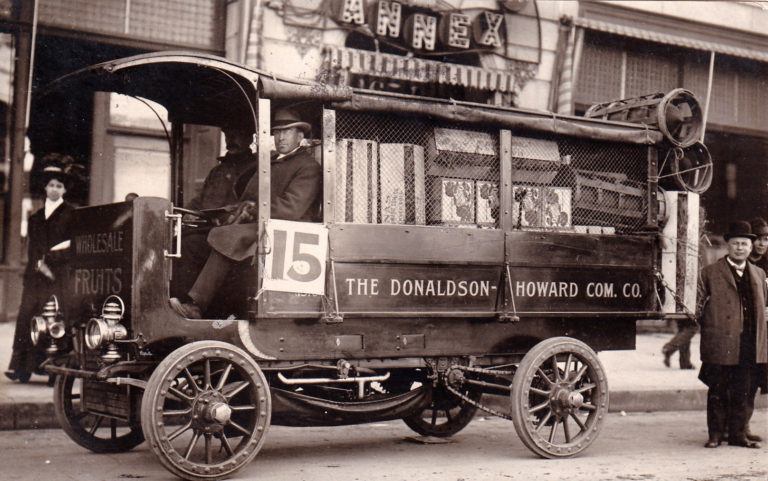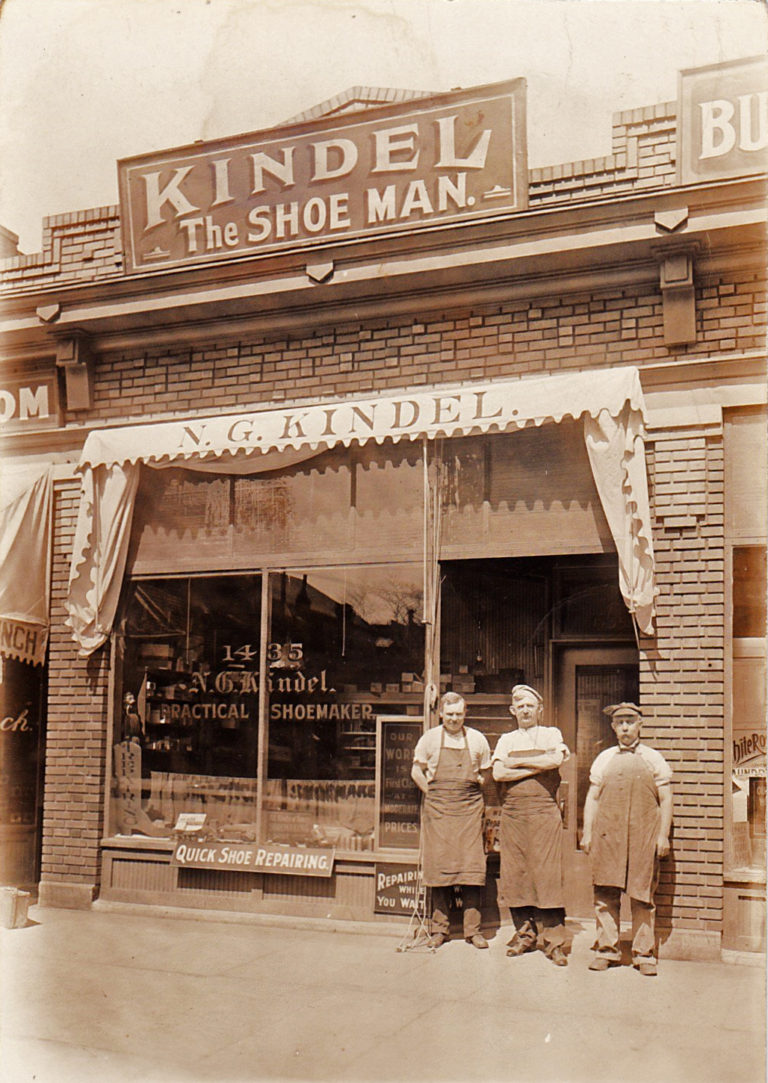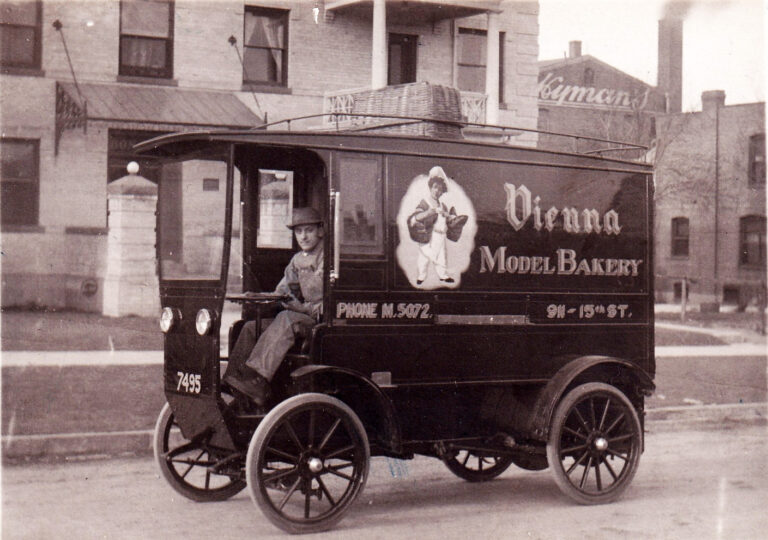In 1891, the New Year’s Day edition of the Rocky Mountain News contained a half-page ad placed by the Fairmount Cemetery Association touting its new cemetery, describing it as “the coming city of the dead.” At the time of its opening, the cemetery’s already-completed blue sandstone Gate Lodge greeted visitors. The lodge, which is still with us, was truly a gate and a lodge, with its 20-foot-tall archway serving as the cemetery entrance and the building proper serving as the living quarters for the cemetery superintendent and his family.
The ad’s printed directions for reaching the cemetery reflected a much smaller Denver, which then had a population hovering around the 107,000 mark. The instructions advised readers that the cemetery sat four and a half miles east of Denver’s Broadway and one mile south of the town of Montclair.
Montclair, Colorado
Montclair was founded in 1885 by Matthias P. Cochrane, originally from Montclair, New Jersey (thus the new town’s name), and German nobleman Baron Manfred von Richtofen, uncle of the well-known flying ace known as the ‘Red Baron’ (Snoopy, of course, had not been born yet). The original intent was for this community to attract the wealthier Denver residents who had been turned off by Denver’s “400 saloons and forty Market Street bordellos.” Accordingly, homeowners were required to purchase and build on lots that were twice the size of the Denver standard lot size of 25 feet by 125 feet. Homes had to be at least three stories high and made of brick or stone, and the town’s trustees had to approve all plans. Saloons and alcohol were forbidden.
Montclair would be incorporated in 1888. But five years later, the crash of the silver market and resulting Panic of 1893 brought all development to a crashing halt. In response, von Richtofen began to promote the town as a health retreat, i.e., the “Carlsbad of Colorado.” But his sudden death from appendicitis in 1898 ended his plans for a health spa, art museum, hotel, gymnasium, casino and pavilions. By 1900, only eighty-eight families were living in Montclair.
Then, in 1902, the newly created City and County of Denver began efforts to incorporate Montclair, which Montclair residents strenuously resisted, fighting Denver all the way to the State Supreme Court. Montclair lost, and Denver annexed Montclair in 1903. Today Montclair is considered one of the neighborhoods in Denver. Baron von Richtofen’s castle, built in Montclair in 1886 and reportedly still privately owned, sits at 7020 E. Twelfth Avenue: https://frontporchne.com/article/historic-montclair-home-richthofen-castle/
The Fairmount Railroad Line
When the Fairmount Cemetery was established in 1890, its location was at some distance south of the East Colfax Railway Company’s electric line. (NOTE: The cemetery’s address is 430 S Quebec Street. It sits southwest of the intersection of Alameda Avenue and Quebec Street.) The photo’s annotation indicates the distance was 1 ¼ miles. To bridge this gap, the Fairmount Cemetery Association established the Fairmount Railway Company, which probably started operating in 1893. The result of their work was a narrow-gauge rail line connecting the cemetery with the terminus of the East Colfax electric line. The cemetery would choose steam power over electrical power, and in the photo you see a steam-powered locomotive pulling two cars. The locomotive had a 0-4-0-wheel configuration, meaning it had 0 leading wheels, 4 driving wheels and 0 trailing wheels.
The locomotive for the Fairmount train was known as a steam dummy or dummy engine, so named because the locomotive was enclosed in a wooden box to resemble a horsecar, the horse-drawn wooden conveyance of that time. It was thought the box disguise would be less likely to frighten horses, but it was later realized that it was the noise and motion of a locomotive, rather than the unfamiliar outlines of a steam engine, that frightened horses.
The manufacturer of the Fairmount Line’s locomotive was the H.K. Porter company in Pittsburgh, Pennsylvania. Though probably the least known locomotive company, H. K. Porter was quite successful by virtue of the niche it filled for producing small locomotives. During its lifetime it produced over 8,000 light-duty and small steam switchers. It’s interesting to note that H.K. Porter produced a compressed-air locomotive for mines. Because it didn’t rely on the burning of fuel, it was a safer option in mining environments.
Reference is made in the photo’s annotation to a 2-year operating period for the Fairmount line, but a Rocky Mountain News article indicates it wasn’t until 1898 that the East Colfax Railway Company bought the Fairmount line and also electrified it. The line was operated until replaced by a bus line in 1930.
Fairmount Cemetery
The goal of the Fairmount Cemetery Association, founded in 1890, was to create a spacious natural setting removed from the urban environment. Accordingly, it plunked down $196,000 for 560 acres on the west half of what was the 1240-acre Windsor Farm about five miles southeast of Denver. (The farm grew food for Denver’s Windsor Hotel. ) The cemetery’s location would be described as near Denver, but “out of the range of (the) railroads, smoke and turmoil of this lively city of industry and manufactures.” The acreage would include Windsor Lake and a portion of the High Line Canal. [The latter is a man-made waterway used for irrigation and recreation. It begins its journey as a diversion dam on the South Platte River about 1.8 miles above the mouth of Waterton Canyon in Douglas County and runs generally northeast through Douglas, Arapahoe, Denver, and Adams Counties. It and other canals carry the “High Line” moniker in reference to their shared engineering principle, whereby the highest possible elevation is kept via twists and turns to ensure a gravity-driven flow. It turns out that the High Line Canal didn’t meet agricultural expectations for irrigation because its water rights were junior to those of 74 other canals in the South Platte watershed. The City of Denver took over the canal in 1924, and today the canal is best known for its recreational offerings.]
The Fairmount Association envisioned its cemetery to be like a park, with curvilinear drives and walking paths. It would prohibit fences, railings, walls and hedges, regulate grave ornamentation and prohibit plastic flowers.
To implement its vision, the association hired German landscape architect Reinhard Schuetze, who In the space of two years planted 4,000 trees and shrubs, making the cemetery into one of the state’s most diverse arboretums. Also, thanks to all of the rose plantings by Schuetze and by families at the graves of loved ones, the cemetery has one of the country’s largest collections of Old Garden Roses. These are classes of roses in existence before 1867.
Given the number and diversity of wildlife attracted to the cemetery, including songbirds, raptors, foxes, bobcats and coyotes, The National Wildlife Federation recently certified the cemetery as a protected habitat.
The public, drawn to Schuetze’s “tree-lined circular drives, walking lanes, shrubbery, vines, roses, and other flowers,” has made significant use of the cemetery as a park. One highlight of the place is its large mausoleum, which houses the state’s largest collection of stained-glass windows. The cemetery offers tours and has encouraged public activities over the years, including the showing of movies outdoors in the warmer months. One offering to the public is the annual Fairmount Car Show – here’s a link to the 2024 event, scheduled for August 11tH: https://www.eventbrite.com/e/fairmount-car-show-tickets-881396038277.
Petal Bombs
In researching the Fairmount Cemetery, I learned of a Memorial Day observance that was new to me – i.e., the dropping of flowers in flyovers by military aircraft. In at least one such instance, in 1933 National Guard planes dropped flowers over both the Fairmount and Mount Olivet cemeteries.
REFERENCES:
- “Denver, By Pen and Picture,” by Brian K. Trembath, April 5, 2016, Denver Public Library Special Collections and Archives at https://history.denverlibrary.org/news/denver-pen-and-picture#:~:text=According%20to%20Thayer’s%20research%2C%20Denver’s,risen%20to%20165%2C000%20by%201898.
- ”Fairmount Car Show” Sunday, August 11, 2024 at https://www.eventbrite.com/e/fairmount-car-show-tickets-881396038277
- “Fairmount Cemetery,” History Colorado, Colorado Encyclopedia at https://coloradoencyclopedia.org/article/fairmount-cemetery
- “Fairmount Cemetery (Denver, Colorado),” Wikipedia at https://en.wikipedia.org/wiki/Fairmount_Cemetery_(Denver,_Colorado)
- “FAIRMOUNT CEMETERY AS AN OUTDOOR REFUGE,” by Laura Ruttum Senturia, June 16, 2020, Denver Public Library Special Collections and Archives at https://history.denverlibrary.org/news/denver/fairmount-cemetery-outdoor-refuge
- “The Fairmount Cemetery Association of Denver,” The Rocky Mountain News dated January 1, 1891, , Colorado Historic Newspapers Collection at https://www.coloradohistoricnewspapers.org/?a=d&d=RMD18910101-01.2.308.1&srpos=615&e=——-en-20–601–img-txIN%7ctxCO%7ctxTA-Fairmount+cemetery——-0——
- “Fairmount Cemetery (Denver, Colorado),” Wikipedia at https://en.wikipedia.org/wiki/Fairmount_Cemetery_(Denver,_Colorado)
- “Fire at the Windsor Farm,” The Central City Register Call dated April 21, 1893, Colorado Historic Newspapers Collection at https://www.coloradohistoricnewspapers.org/?a=d&d=WRC18930421-01.2.64&srpos=775&e=——-en-20–761–img-txIN%7ctxCO%7ctxTA-Fairmount+cemetery——-0——
- “The gifts and curses of Denver’s historic Fairmount Cemetery,” by Seth Boster, Apr 11, 2023, Updated May 13, 2024, The Gazette at https://gazette.com/life/the-gifts-and-curses-of-denvers-historic-fairmount-cemetery/article_3a45f310-cf40-11ed-b113-63106412d19d.html
- “High Line Canal,” Wikipedia at https://en.wikipedia.org/wiki/High_Line_Canal
- “Historic Streetcar Systems of Colorado — REPORT CDOT-2020-1,” Colorado Department of Transportation at dated September 2020 at https://www.codot.gov/programs/research/reports/2020-research-reports/historic-streetcar-systems-of-colorado-1/cdot-2020-11.pdf
- “History of the 1890 Gate Lodge,” Fairmount Heritage Foundation at https://www.fairmountheritagefoundation.org/our-grounds/history-of-the-1890-gate-lodge
- “H K Porter Company: Builder Of Small Locomotives,” by Adam Burns, May 18, 2023, at https://www.american-rails.com/hk.html
- “Local Brevities,” The Rocky Mountain News dated May 30, 1893, Colorado Historic Newspapers Collection at https://www.coloradohistoricnewspapers.org/?a=d&d=RMD18930530-01.2.75&srpos=16&e=–1893—1893–en-20–1–img-txIN%7ctxCO%7ctxTA-Fairmount+Railroad——-0——
- “Memorial Services Held at All Denver Cemeteries,” The Rocky Mountain News dated May 31, 1933, Colorado Historic Newspapers Collection at https://www.coloradohistoricnewspapers.org/?a=d&d=RMD19330531-01.2.40&srpos=222&e=——-en-20–221–img-txIN%7ctxCO%7ctxTA-Fairmount+cemetery——-0——
- “Montclair,” The Rocky Mountain News dated May 28, 1893, Colorado Historic Newspapers Collection at https://www.coloradohistoricnewspapers.org/?a=d&d=RMD18930528-01.2.143&srpos=1&e=–1893—1893–en-20–1–img-txIN%7ctxCO%7ctxTA-Fairmount+Railroad——-0——
- “Montclair, Denver,” Wikipedia at https://en.wikipedia.org/wiki/Montclair,_Denver
- “Montclair Drops Battle and Accepts Bus Lines,” The Rocky Mountain News dated February 28, 1930, Colorado Historic Newspapers Collection at https://www.coloradohistoricnewspapers.org/?a=d&d=RMD19300228-01.2.172&srpos=481&e=——-en-20–481–img-txIN%7ctxCO%7ctxTA-Fairmount+cemetery——-0——
- “Railway Ran to Cemetery,” The Rocky Mountain News dated June 26, 1960, Colorado Historic Newspapers Collection at https://www.coloradohistoricnewspapers.org/?a=d&d=RMD19600626-01.2.295&srpos=824&e=——-en-20–821–img-txIN%7ctxCO%7ctxTA-Fairmount+cemetery——-0——
- “Richthofen Castle,” Colorado Encyclopedia at https://coloradoencyclopedia.org/article/richthofen-castle
- “Rocky Mountain High: Touring Denver’s Fairmount Cemetery, Part I,” a blog by Tracy Rylands, October 21, 2016, at https://adventuresincemeteryhopping.com/2016/10/21/rocky-mountain-high/
- “Steam dummy,” Wikipedia at https://en.wikipedia.org/wiki/Steam_dummy
- “Thousands to March in Parade in Memory of Men Who Died in Service of Their Flag,” The Rocky Mountain News dated May 30, 1930, Colorado Historic Newspapers Collection at https://www.coloradohistoricnewspapers.org/?a=d&d=RMD19300530-01.2.7&srpos=677&e=——-en-20–661–img-txIN%7ctxCO%7ctxTA-Fairmount+cemetery——-0——
- “What Is An Old Garden Rose?” by Paul Zimmerman, fine Gardening at https://www.finegardening.com/article/what-is-an-old-garden-rose#:~:text=To%20put%20it%20plainly%2C%20Old,Teas%20and%20so%20on%20relax.
- Whyte notation,” Wikipedia at https://en.wikipedia.org/wiki/Whyte_notation




